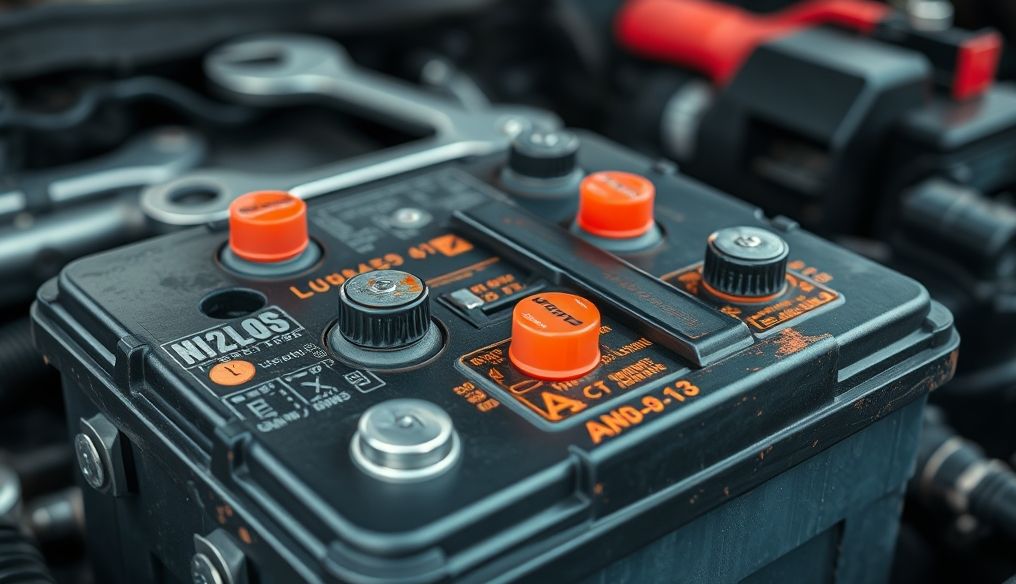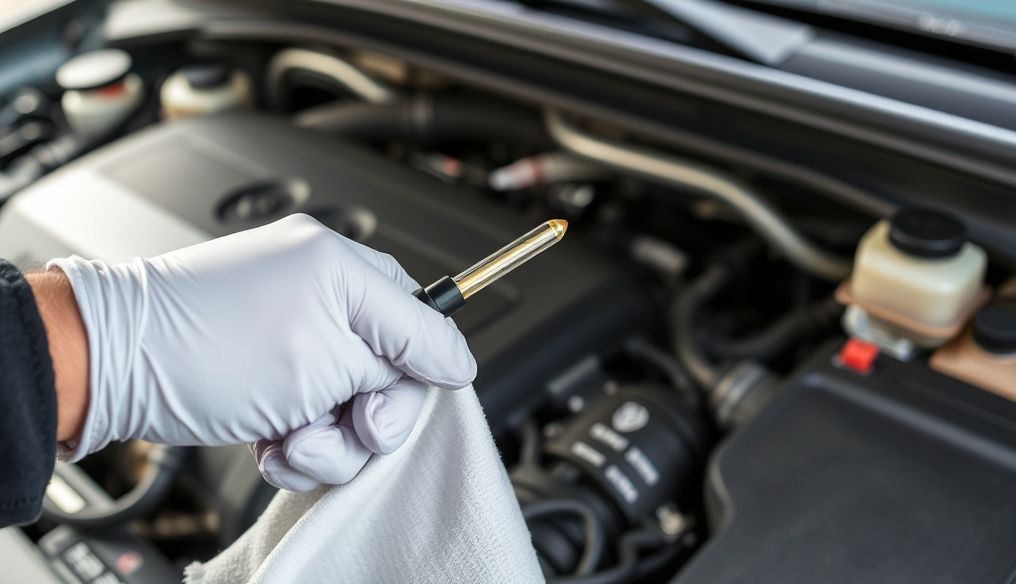What are the signs of a failing car battery and how to prevent them?
A car battery is an essential component for the proper functioning of a vehicle. It is responsible for providing the necessary power to start the engine, operate the lights, safety systems, and other electrical components. Over time, the battery loses its ability to store energy, leading to signs indicating its deterioration. In this article, we will review the most important of these signs and how to prevent them.
Chapter 1: Understanding the Role and Importance of a Car Battery
Before delving into the signs of failure, it's important to understand the battery's role in the car. The battery acts as a store of electrical energy. When starting the car, the battery provides the power needed to operate the starter motor, which in turn rotates the engine. After that, the alternator takes over, providing the power to run the car and charge the battery simultaneously.
Importance of the Battery:
- Starting the Engine: The primary role of the battery.
- Providing Power to Electrical Components: Lights, air conditioning, sound system, etc.
- Supporting Safety Systems: Airbags, Anti-lock Braking System (ABS).
Chapter 2: Warning Signs of a Failing Car Battery
Several signs indicate that your car battery is starting to fail and needs inspection or replacement. It's important to pay attention to these signs to avoid sudden breakdowns.
1. Difficulty Starting the Engine:
This is the most common sign. If you notice that the engine takes longer than usual to start, or makes a weak sound when trying to start, it may be due to a weak battery.
Reason: The battery is not providing enough power for the starter motor to turn the engine fast enough.
2. Dim Lights:
If the car's lights appear dimmer than usual, especially when the engine is running, it may be due to a weak battery. You may also notice that the lights dim when operating other electrical components such as the air conditioning system.
Reason: The battery is not providing enough voltage to operate the lights efficiently.
3. Swollen or Cracked Battery:
Inspect the battery regularly for any visible signs of damage such as swelling or cracking. These signs indicate internal damage to the battery.
Reason: Exposure to extreme heat or overcharging can cause battery damage and swelling.
4. Corroded Battery Terminals:
Corrosion of the terminals (positive and negative) leads to poor electrical connection. You may notice a white or blue substance accumulating around the terminals.
Reason: Chemical reaction between the battery acid and air.
5. Foul Odor:
If you smell a foul odor similar to rotten eggs near the battery, it may be due to battery acid leakage.
Reason: Internal damage to the battery leads to acid leakage.
6. Battery Light on the Dashboard:
The battery light on the dashboard illuminates when there is a problem with the charging system or the battery itself. The car should be inspected as soon as possible.
Reason: There may be a problem with the alternator or the battery itself.
7. Difficulty Starting the Car in Cold Weather:
In cold weather, the battery needs more power to start the engine. If the battery is weak, you may find it difficult to start the car on a cold morning.
Reason: Low temperature reduces the battery's ability to provide power.
8. Battery Age:
A car battery typically lasts from 3 to 5 years. If your battery is older than this, it may be time to replace it.
Reason: Over time, the battery loses its ability to store energy.
Chapter 3: Causes of Car Battery Failure
There are several factors that contribute to car battery failure and reduce its lifespan.
1. Extreme Temperatures:
Extreme heat and extreme cold negatively affect battery performance. High heat increases the rate of chemical reactions inside the battery, leading to its deterioration. Extreme cold reduces the battery's ability to provide power.
2. Overcharging:
Overcharging the battery can cause it to fail. This is usually due to a fault in the car's charging system.
3. Repeated Deep Discharges:
Leaving the lights or other electrical components on for an extended period without running the engine leads to complete battery discharge. Repeated deep discharges reduce battery life.
4. Not Using the Car for a Long Time:
If you leave the car for a long time without running it, the battery gradually loses its charge. This can lead to battery failure.
5. Vibrations:
Continuous vibrations can cause damage to the internal components of the battery.
Chapter 4: How to Check a Car Battery
You can check the car battery yourself using some simple tools or visit a specialized technician.
1. Visual Inspection:
Inspect the battery for any visible signs of damage such as swelling, cracking, or corrosion.
2. Using a Battery Tester:
You can purchase a battery tester from auto parts stores. This device measures the battery's voltage and its ability to provide current.
3. Voltage Test:
Using a voltmeter, you can measure the battery voltage. The battery voltage should be around 12.6 volts when the engine is off.
4. Load Test:
This test assesses the battery's ability to provide current under load. This test requires a special device and may be best left to a specialized technician.
Chapter 5: Tips for Maintaining a Car Battery
By following some simple tips, you can extend the life of your car battery and avoid problems.
1. Keep the Battery Terminals Clean:
Clean the battery terminals regularly using a wire brush and a solution of water and baking soda.
2. Avoid Leaving Lights or Electrical Components On for a Long Time:
Make sure to turn off the lights and all other electrical components before turning off the engine.
3. Inspect the Charging System Regularly:
Make sure the alternator is working properly and charging the battery sufficiently.
4. Run the Car Regularly:
If you don't use the car regularly, run it for 15-20 minutes once a week to charge the battery.
5. Use a Battery Charger:
If you don't use the car for a long time, use a battery charger to maintain the battery's charge.
6. Avoid Exposing the Battery to Extreme Temperatures:
Try to park the car in a shaded area in hot weather.
Chapter 6: When Should You Replace a Car Battery?
If any of the warning signs mentioned above appear, or if your battery has exceeded its lifespan, it may be time to replace it. Replacing the battery in a timely manner prevents sudden breakdowns and ensures proper car performance.
Signs Requiring Immediate Replacement:
- Increasing difficulty starting the engine.
- Severe dimming of the lights.
- Swollen or cracked battery.
- Battery acid leakage.
Chapter 7: Types of Car Batteries
There are several types of car batteries available on the market. Each type has its advantages and disadvantages.
1. Conventional Lead-Acid Batteries:
This is the most common and least expensive type. These batteries require regular maintenance such as adding distilled water.
2. Sealed Lead-Acid Batteries:
This type does not require regular maintenance. It is more resistant to leakage.
3. AGM (Absorbent Glass Mat) Batteries:
These batteries use a glass mat to absorb the battery acid. They are more resistant to vibrations and more efficient in cold weather.
4. Lithium-Ion Batteries:
These batteries are used in hybrid and electric cars. They are lighter and more efficient than lead-acid batteries.
Chapter 8: Steps to Replace a Car Battery
You can replace the car battery yourself if you have some mechanical experience. However, if you are not sure, it is best to leave it to a specialized technician.
Required Tools:
- Wrench.
- Protective gloves.
- Protective glasses.
- Wire brush.
- Solution of water and baking soda.
- New battery.
Steps:
- Make sure the engine is off and the key is removed.
- Disconnect the negative (black) cable first.
- Disconnect the positive (red) cable.
- Remove the battery hold-down clamp.
- Carefully lift out the old battery.
- Clean the battery tray and cable terminals.
- Place the new battery in its place.
- Install the battery hold-down clamp.
- Connect the positive (red) cable first.
- Connect the negative (black) cable.
- Make sure all connections are tight.
Chapter 9: Proper Disposal of Old Car Batteries
Car batteries contain chemicals that are harmful to the environment. They must be disposed of properly by handing them over to a battery recycling center.
Importance of Recycling:
- Prevent environmental pollution.
- Recover valuable materials such as lead.
- Conserve natural resources.
Conclusion
The car battery is a vital component for the car's operation. By understanding the signs of failure and following the tips for maintaining it, you can extend the battery life and avoid sudden breakdowns. If you suspect that your battery may be damaged, have it checked as soon as possible.




